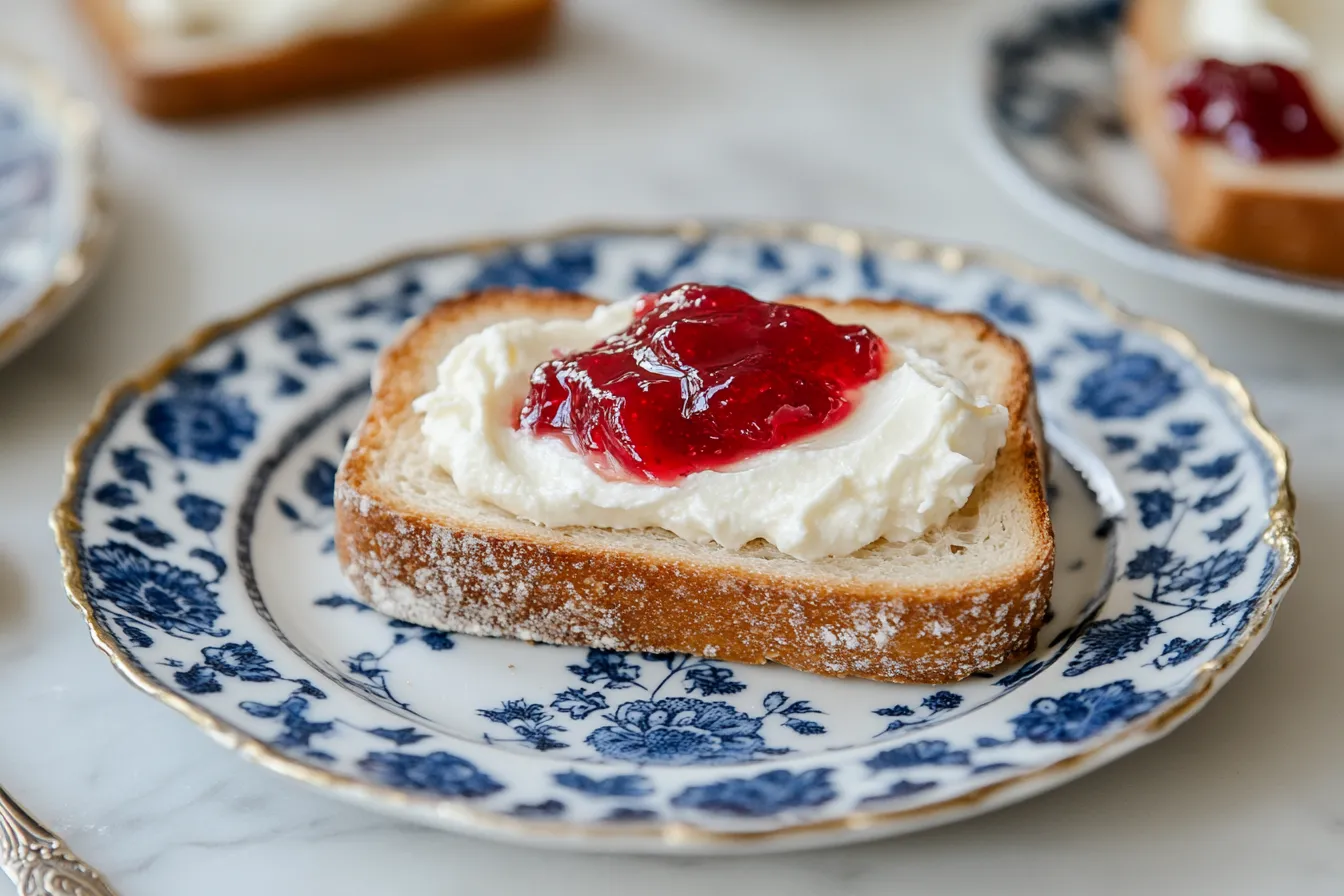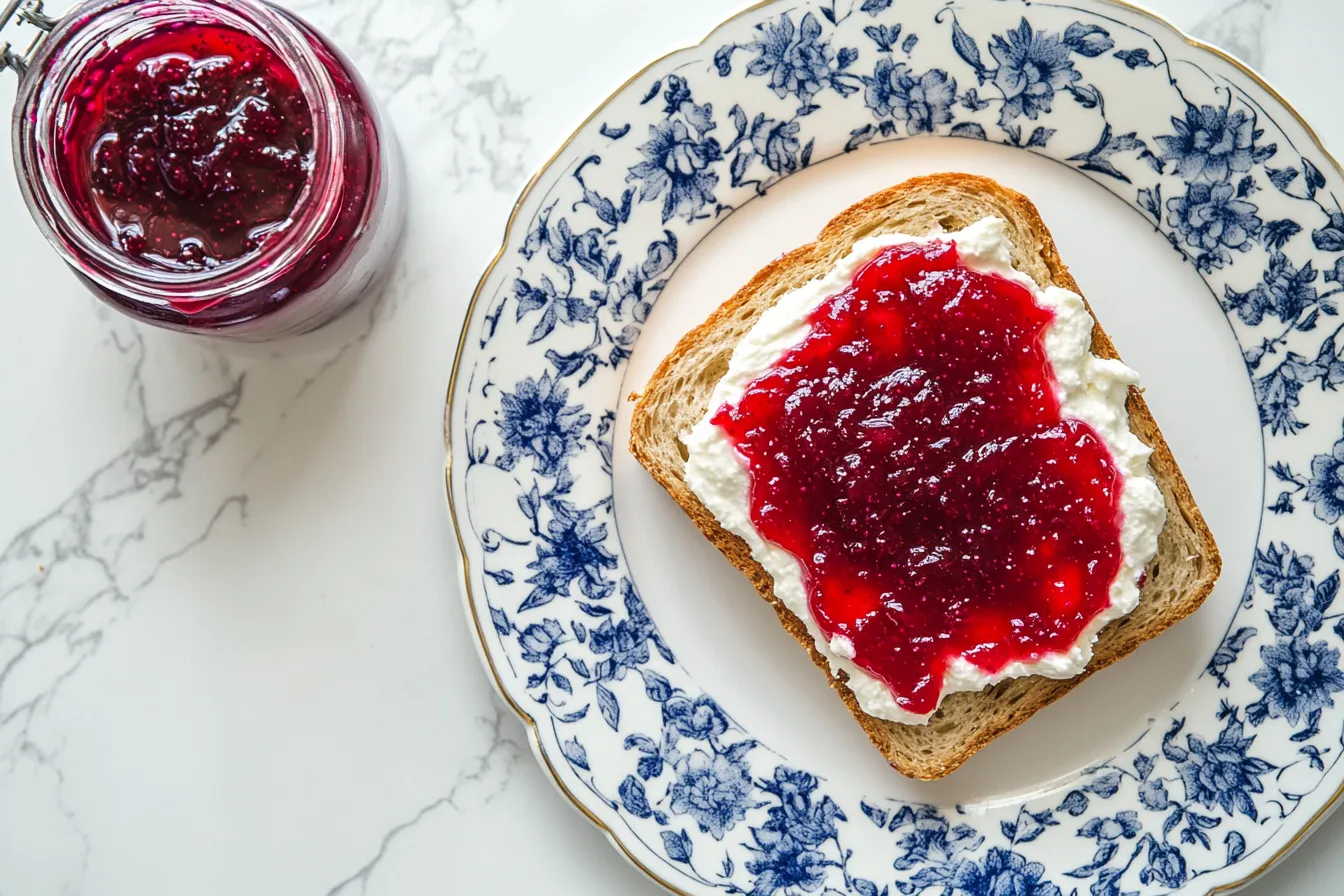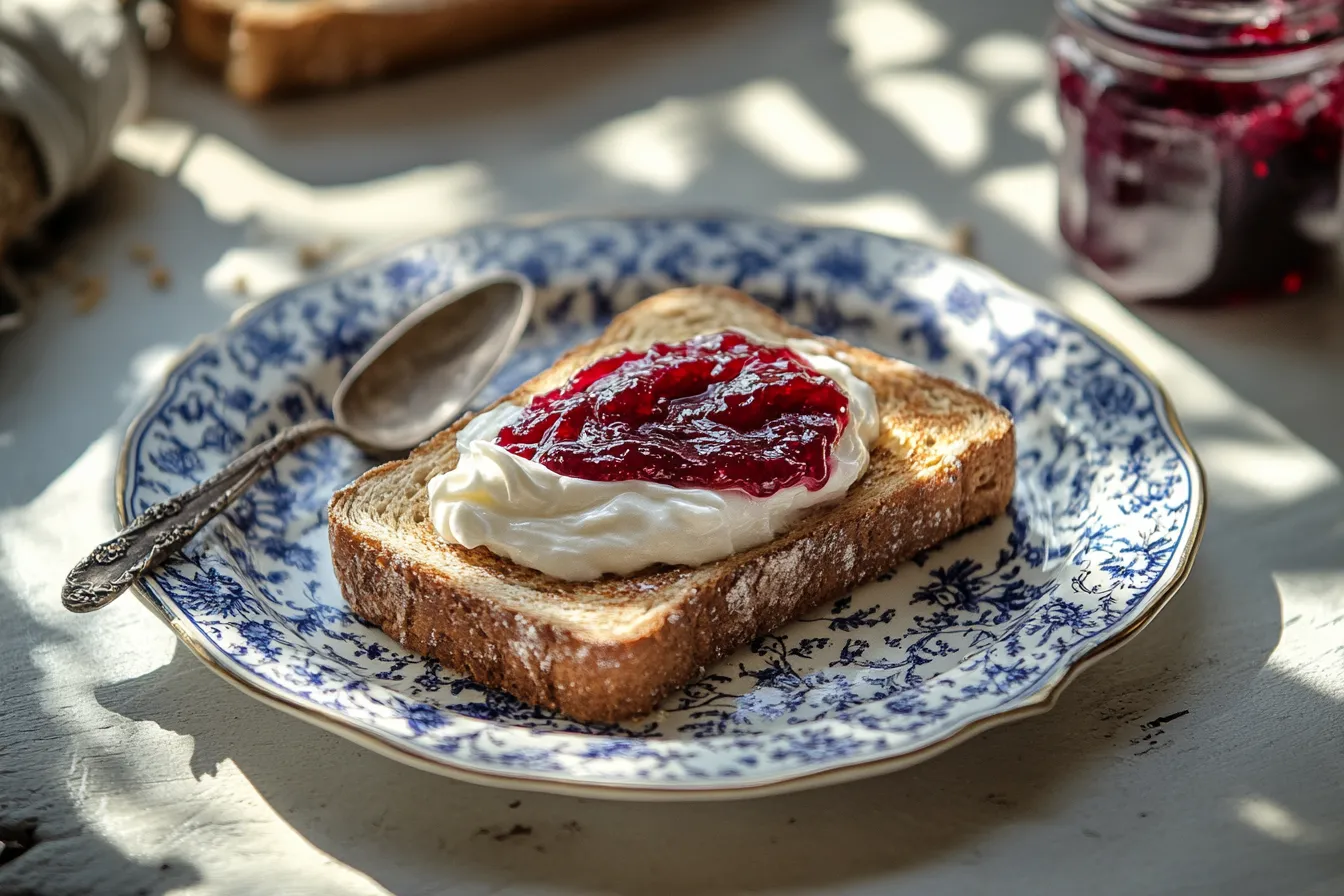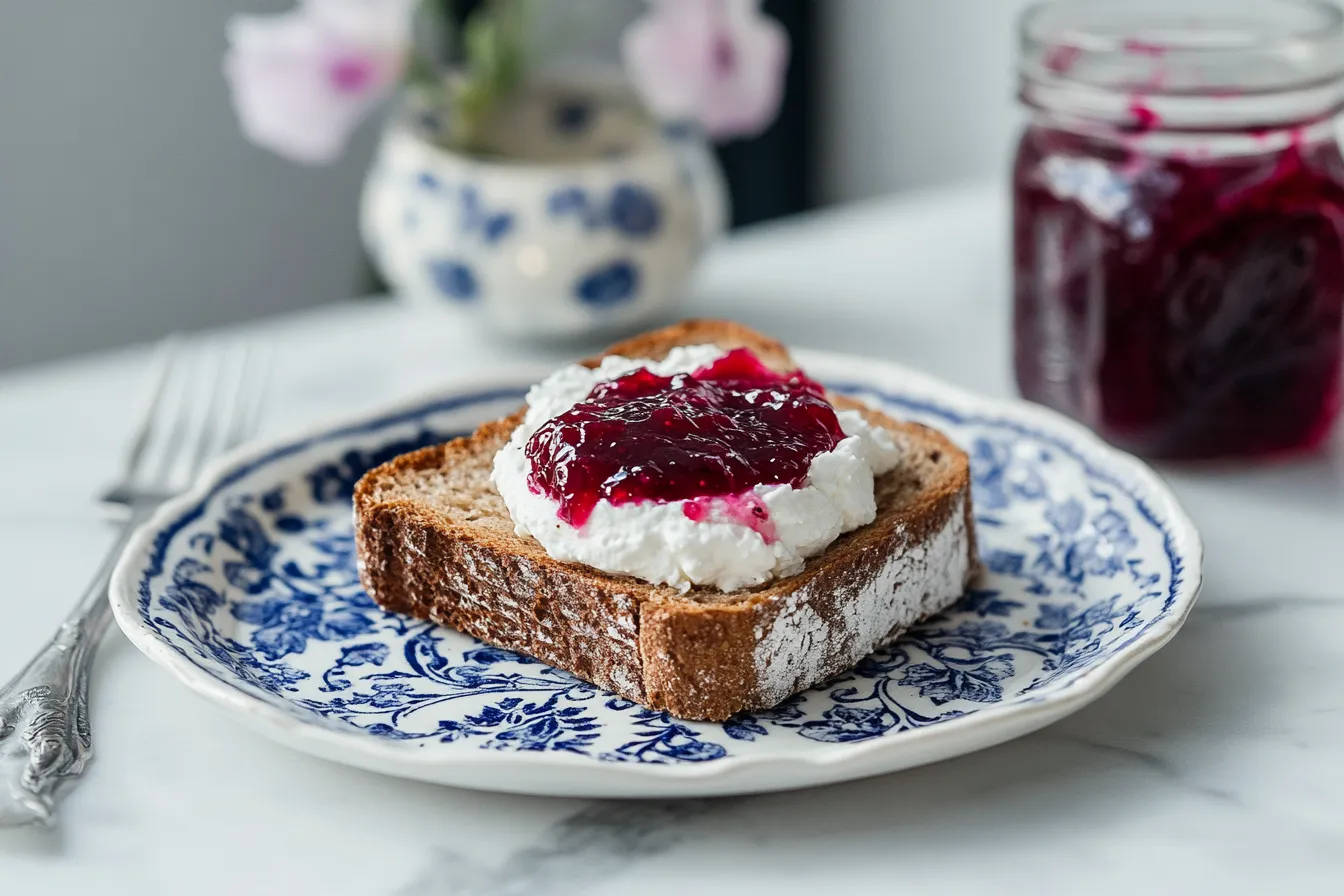 Pin it
Pin it
This gorgeous seedless raspberry rose jelly packs incredible raspberry punch without any seeds—making it ideal for folks who adore raspberries but don't want the textural interruption. Adding just a hint of rose water actually makes the raspberry taste even more like raspberry—a little food magic!
I whipped up this jelly batch last summer and gave tiny jars to my buddies. I couldn't believe when three of them asked me how to make it right away! The bright color and clean taste really grab everyone's attention.
Key Ingredients and Smart Picking Advice
- Raspberries - Go for super fresh, totally ripe ones for maximum flavor
- Rose Water - A tiny splash lifts the berry taste without making it flowery
- Lemon Juice - Adds natural thickening power and cuts sweetness
- Sugar - Gives the right thickness and keeps your jelly fresh
- Water - Just enough to help pull out all the berry goodness
The real trick happens when you strain everything, pulling the seeds and pulp away from the pure raspberry liquid, leaving you with a clear, flavor-packed jelly.
Step-by-Step Cooking Guide
- Step 1: Pull Out All The Raspberry Juice
- Cook raspberries with water until they totally break down. This first cooking pulls out all the flavor and natural thickeners from your berries. Keep stirring so nothing sticks or burns.
- Step 2: Strain Everything Well
- Put wet cheesecloth in layers inside a fine strainer and pour your raspberry mix through. This key step gets rid of all seeds and pulp. Let gravity do its job—don't push or squeeze or your jelly will get cloudy.
- Step 3: Strain Once More For Crystal Clarity
- For the clearest result, strain your juice again with fresh cheesecloth. This extra work makes sure your jelly has that amazing gem-like look that makes it stand out.
- Step 4: Cook With Sugar And Flavors
- Put your strained juice in a clean pot and add sugar, lemon juice, and rose water. Getting these amounts right helps it set properly and taste balanced. Bring it all to a boil and cook until it'll turn into jelly.
- Step 5: Check If It's Done
- Use a cooking thermometer to see when it hits 220°F, which means it'll set up nicely. You can also try the cold plate trick—put a little on a cold plate and if it wrinkles when you push it, it's ready.
- Step 6: Put In Jars And Store
- Pour into clean jars while still hot and close tight. Keep in your fridge for freshness and the perfect soft texture. It'll keep setting as it cools down.
 Pin it
Pin it
Incredible Texture Quality
This jelly sets up softer than store-bought kinds, giving you a rich feel that just melts away in your mouth. Unlike the bouncy, firm texture of jellies with added pectin, this one spreads so nicely on warm toast without tearing it. The soft consistency also works wonders swirled into yogurt or as a fancy cake filling.
Uses Beyond Breakfast
While it's amazing on toast with labneh or cream cheese, this jelly can do so much more. Warm it up a bit for a classy sauce on vanilla ice cream. Drop a spoonful on your cheese board next to aged cheddar. Mix a bit into champagne for a tasty raspberry rose drink, or blend it with olive oil and white wine vinegar for a fancy salad dressing.
 Pin it
Pin it
Perfect Homemade Gift
Not many homemade presents can match the wow factor of this ruby-colored jelly in pretty glass jars that catch the light. Pair it with a fresh fancy bread loaf and some labneh or cultured butter for a great host gift. Small jars work great as wedding or shower favors with cute labels, and the rose connection makes it extra fitting for romantic celebrations.
Year-Round Options
Summer's fresh-picked raspberries give the most vivid flavor, but you can totally use frozen berries during winter. The jelly-making process actually pulls amazing flavor from berries that aren't perfect, so it's a great way to use end-of-season fruit that might be too soft to eat fresh but still packed with taste.
Important Reminders
- Never push down on berries while straining or your jelly will look foggy
- Straining twice makes it crystal clear and super pretty
- This sets up softer than grocery store jellies
- Keeping it cold helps get the texture just right
- Better wear an apron because raspberry stains won't come out easily!
I found out how crucial patience is during straining after my first try ended up cloudy with seed bits. Now I just let gravity handle things for the clearest, seed-free results.
Pro Kitchen Tricks
- Wet the cheesecloth first so it won't soak up your precious juice
- Stack several cheesecloth layers for the clearest jelly
- Wash your pot completely between cooking stages to avoid seeds in the final jelly
- Remove foam for the prettiest clarity
- Let jars cool all the way before putting them in the fridge
 Pin it
Pin it
This Raspberry Rose Jelly has become my go-to summer creation. It captures raspberry season in its purest form, without a single seed getting in the way. The rose water touch is subtle but game-changing—most people can't quite place it, but they always mention how the raspberry flavor seems stronger than usual.
Last Bits of Advice
- Try to use within a year for top flavor, though cold jars often stay good longer
- For pantry storage, can the jars using proper methods
- Little jars work great for gifts or trying different serving ideas
- Don't throw away the strained pulp—use it in smoothies or baking
- Team it up with crusty bread and labneh for a simple but amazing snack
Frequently Asked Questions
- → Do I need to add pectin?
- Nope, the raspberries and lemon juice have enough natural thickeners already.
- → Why not wash the raspberries?
- You'll keep more of their taste and natural goodness this way.
- → Do I need to process the jars?
- Not if you're keeping them in the fridge, where they'll stay good for months.
- → What if I don't have rose water?
- You can skip it for plain raspberry jelly or try orange flower water instead.
- → How do I know when it's ready?
- It'll reach 220°F on a thermometer or pass the cold plate test.
